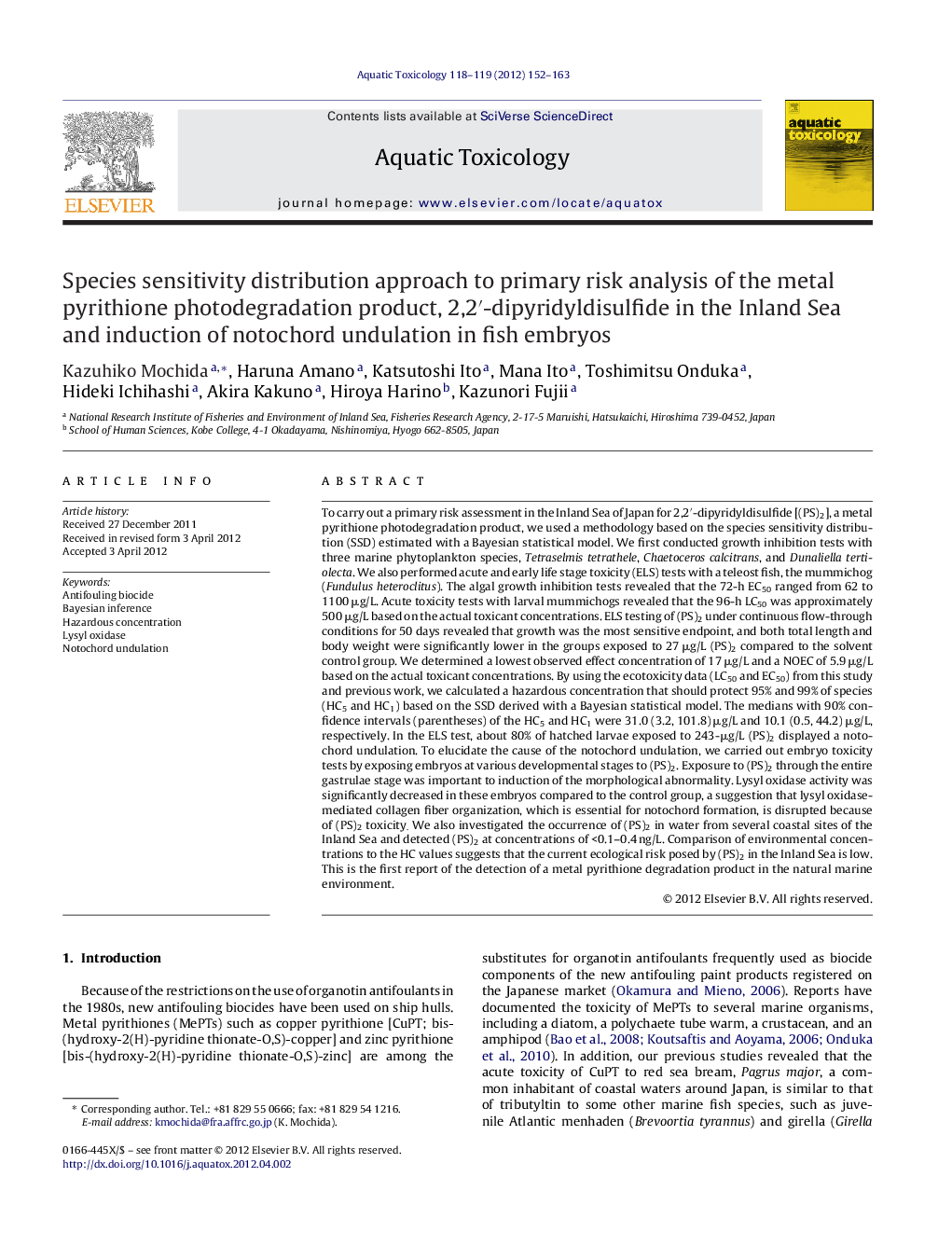| Article ID | Journal | Published Year | Pages | File Type |
|---|---|---|---|---|
| 4529728 | Aquatic Toxicology | 2012 | 12 Pages |
To carry out a primary risk assessment in the Inland Sea of Japan for 2,2′-dipyridyldisulfide [(PS)2], a metal pyrithione photodegradation product, we used a methodology based on the species sensitivity distribution (SSD) estimated with a Bayesian statistical model. We first conducted growth inhibition tests with three marine phytoplankton species, Tetraselmis tetrathele, Chaetoceros calcitrans, and Dunaliella tertiolecta. We also performed acute and early life stage toxicity (ELS) tests with a teleost fish, the mummichog (Fundulus heteroclitus). The algal growth inhibition tests revealed that the 72-h EC50 ranged from 62 to 1100 μg/L. Acute toxicity tests with larval mummichogs revealed that the 96-h LC50 was approximately 500 μg/L based on the actual toxicant concentrations. ELS testing of (PS)2 under continuous flow-through conditions for 50 days revealed that growth was the most sensitive endpoint, and both total length and body weight were significantly lower in the groups exposed to 27 μg/L (PS)2 compared to the solvent control group. We determined a lowest observed effect concentration of 17 μg/L and a NOEC of 5.9 μg/L based on the actual toxicant concentrations. By using the ecotoxicity data (LC50 and EC50) from this study and previous work, we calculated a hazardous concentration that should protect 95% and 99% of species (HC5 and HC1) based on the SSD derived with a Bayesian statistical model. The medians with 90% confidence intervals (parentheses) of the HC5 and HC1 were 31.0 (3.2, 101.8) μg/L and 10.1 (0.5, 44.2) μg/L, respectively. In the ELS test, about 80% of hatched larvae exposed to 243-μg/L (PS)2 displayed a notochord undulation. To elucidate the cause of the notochord undulation, we carried out embryo toxicity tests by exposing embryos at various developmental stages to (PS)2. Exposure to (PS)2 through the entire gastrulae stage was important to induction of the morphological abnormality. Lysyl oxidase activity was significantly decreased in these embryos compared to the control group, a suggestion that lysyl oxidase-mediated collagen fiber organization, which is essential for notochord formation, is disrupted because of (PS)2 toxicity. We also investigated the occurrence of (PS)2 in water from several coastal sites of the Inland Sea and detected (PS)2 at concentrations of <0.1–0.4 ng/L. Comparison of environmental concentrations to the HC values suggests that the current ecological risk posed by (PS)2 in the Inland Sea is low. This is the first report of the detection of a metal pyrithione degradation product in the natural marine environment.
► We carried out primary risk analysis in the Inland Sea for a metal pyrithione degradation product. ► We used a species sensitivity distribution approach to estimate PNEC using a Bayesian statistical model. ► Exposure of the product induced notochord undulation in fish embryos via lysyl oxidase inhibition.
